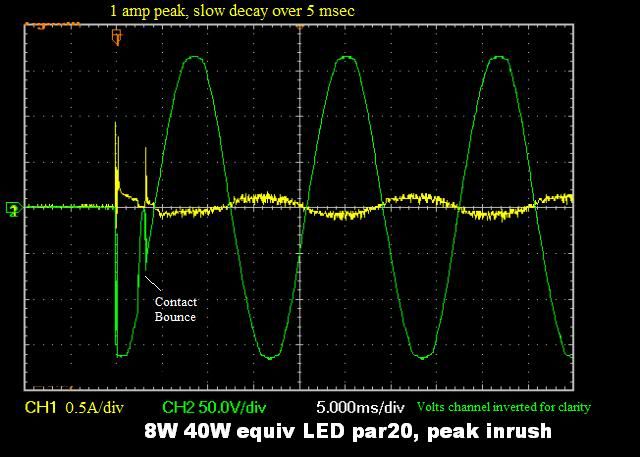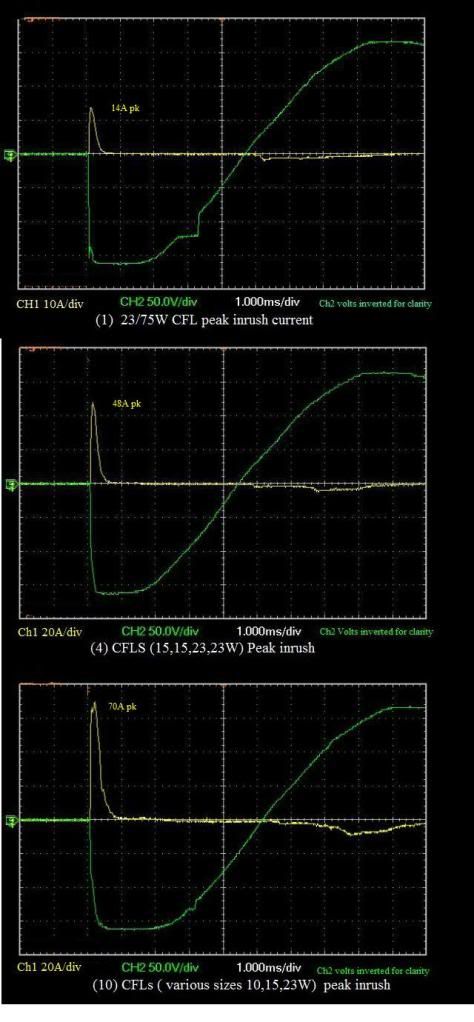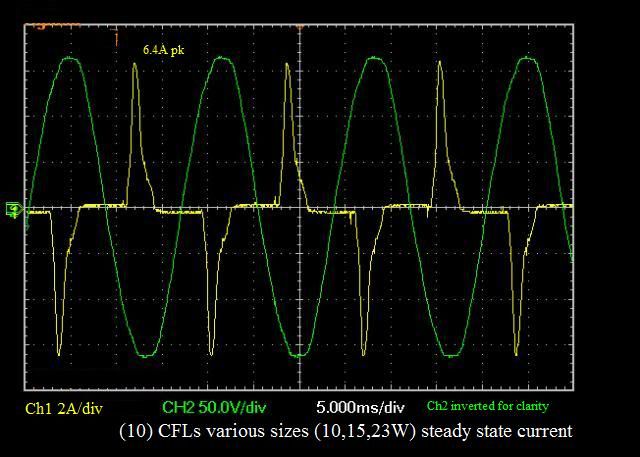gar
Senior Member
- Location
- Ann Arbor, Michigan
- Occupation
- EE
101127-0728 EST
ELA:
I can make such a measurement, but at this time I do not want to go thru the major setup to do it.
The current marked on the bulb, 0.18 A for the 13 W bulb, is the RMS current and for 25 lamps is of no significance for a 20 A breaker. I believe that is why wireguru asked his question. But peak inrush might be. But without a more accurate estimate than my wild guess of what this peak energy might be it is still an open question on the reason.
I also think it would be unlikely that there would be 25 11 or 13 W bulbs on one switch. But iwire has a good reason.
wireguru:
If you compare the load and heating of wires, and energy consumption, between incandescent and fluorescent lighting for the same amount of light effectiveness, then fluorescent wins. Psychologically it may be a different story.
.
ELA:
I can make such a measurement, but at this time I do not want to go thru the major setup to do it.
The current marked on the bulb, 0.18 A for the 13 W bulb, is the RMS current and for 25 lamps is of no significance for a 20 A breaker. I believe that is why wireguru asked his question. But peak inrush might be. But without a more accurate estimate than my wild guess of what this peak energy might be it is still an open question on the reason.
I also think it would be unlikely that there would be 25 11 or 13 W bulbs on one switch. But iwire has a good reason.
wireguru:
Cost and political pressure. Incandescents are being banned.its interesting the utilities would be pushing a product with such poor power factor so hard (especially to residential users that dont get billed for kvar).
why dont they make the CFLs with a better ballast circuit with PFC and have the tube replaceable?
If you compare the load and heating of wires, and energy consumption, between incandescent and fluorescent lighting for the same amount of light effectiveness, then fluorescent wins. Psychologically it may be a different story.
.





